HOW TO PLAN THE ULTIMATE NORWAY ROAD TRIP [FOR FIRST TIMERS]
Norway, The beautiful monarchy of the Vikings, a land of trolls and legends, stunning fjords, and dramatic wild landscapes. Norway has Wonderful and pristine land of wonders, suitable for all hiking lovers.
A road trip in Norway is for you if you are a mountain climber and addicted to the adrenaline of peaks, snow, and ice. If you like long hiking in the cold or warm sun, rain or fog. If you like quiet and nature.
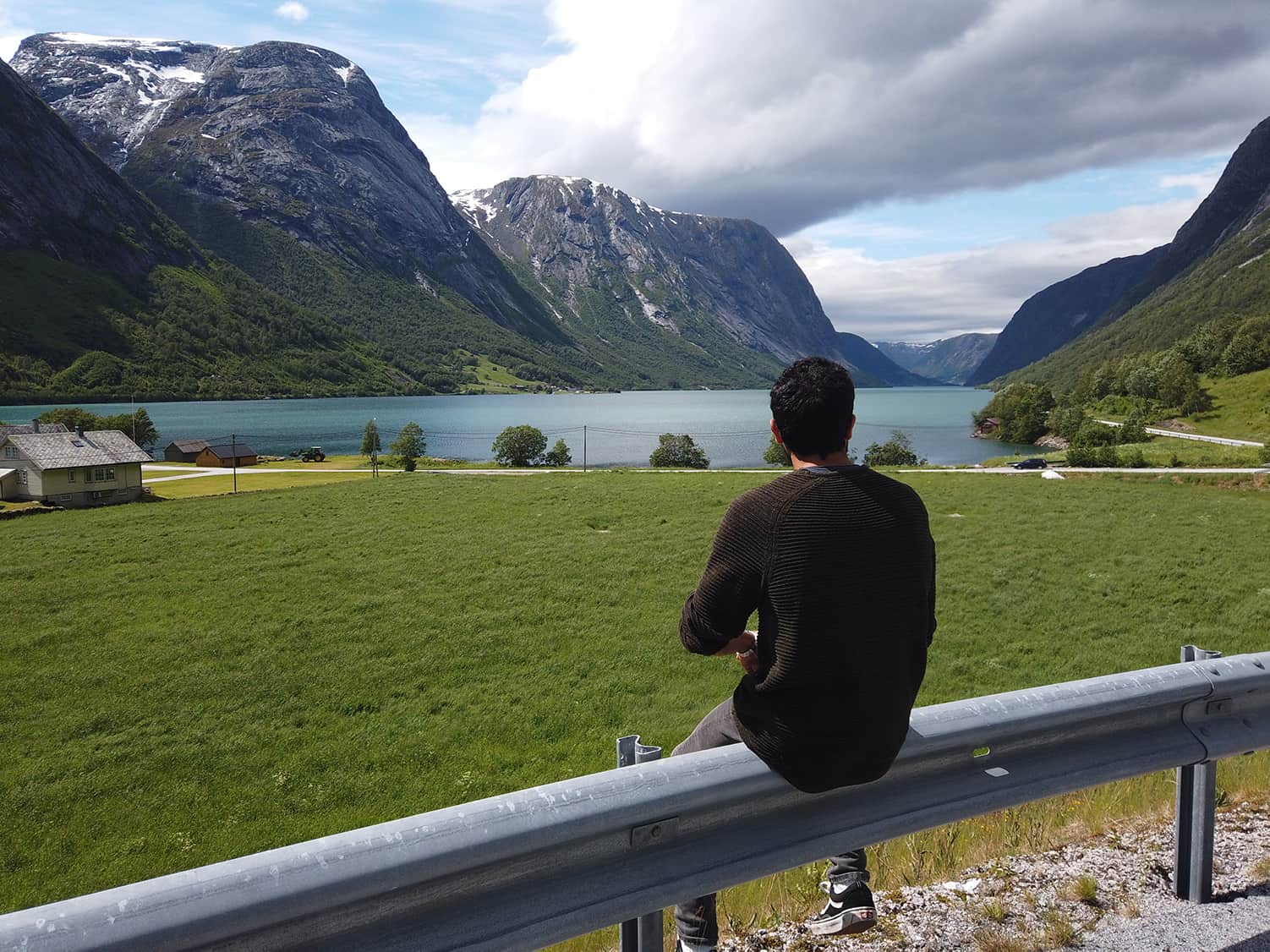
The beauty of Norway is an indisputable fact. Norway also has cultural and artistic heritage, some of the steepest roads, some of the northernmost institutions in the world, and many happy people.
A Norway road trip – If you are sick of landscape of any kind!
Important thing to know on a trip to Norway, Prepare your wallet – There is no other way to say it.
Everything is more expensive than we are used to.
The prices in Norway will meet you in all areas of the trip as a tourist in a foreign country: in tourism services and nature reserves, car rental and fuel prices, accommodation and food, site entrances, parking, ferries, toll roads, and more.
However, it’s possible to travel to Norway on a budget.
Norway is a large country – A variety of options stands before you visiting Norway.
Therefore, it’s recommended to plan your trip to Norway well ahead!
Before we begin – Here are some word suffixes in the Norwegian language related to elements in the landscape:
brean = glacier
vatnet = lake
fossen = waterfall
dalen = valley
Gard = farm
vegen = road
fjellet = mountain road (fjell = mountain)
Beautiful Empty Road In Norway
PLAN YOUR ROAD TRIP AROUND NORWAY:
HOW MANY DAYS SHOULD YOU SPEND IN NORWAY?
In my opinion, the minimum time for a Norway road trip is 10 days. the ideal time for a road trip in Norway is 14 days.
Norway is a huge country! On an independent travel to Norway everyone has their own pace and time and it is worth taking the time to make the most of Norway.
Despite this, with 2 weeks in Norway, you can have time to visit the main cities that shape the whole country and also get a taste of the breathtaking fjord sights.
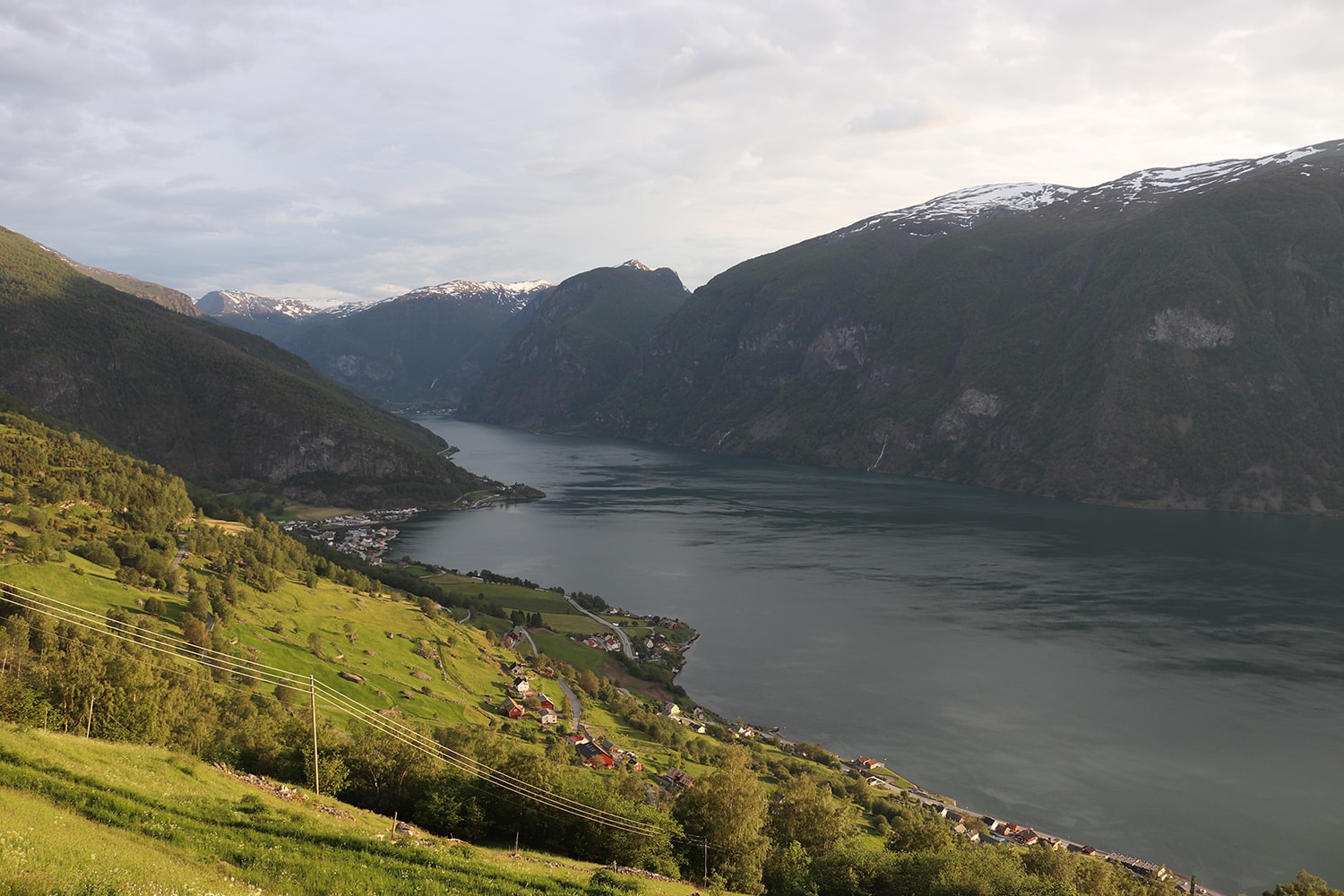
BEST TIME FOR ROAD TRIPS IN NORWAY
I visited Norway in the summer so I will write about it – I think the best time to do a road trip in Norway its in the summer for those visiting Norway for the first time.
ROAD TRIP IN NORWAY DURING SUMMER
Summer in Norway means long days, short nights, and quite often at stable and pleasant temperatures on land and at sea.
From late June to mid-August, the weather is warm and not really dark.
This is a welcome respite after a long, dark, and cold winter and like the flowers themselves, the Norwegians bloom from the pleasant sun and heat.
Once summer gets a grip on Norway all the locals go outside to enjoy the sun after the long and cold winter, there are barbecues in the parks, and in general, just everyone goes outside the houses.
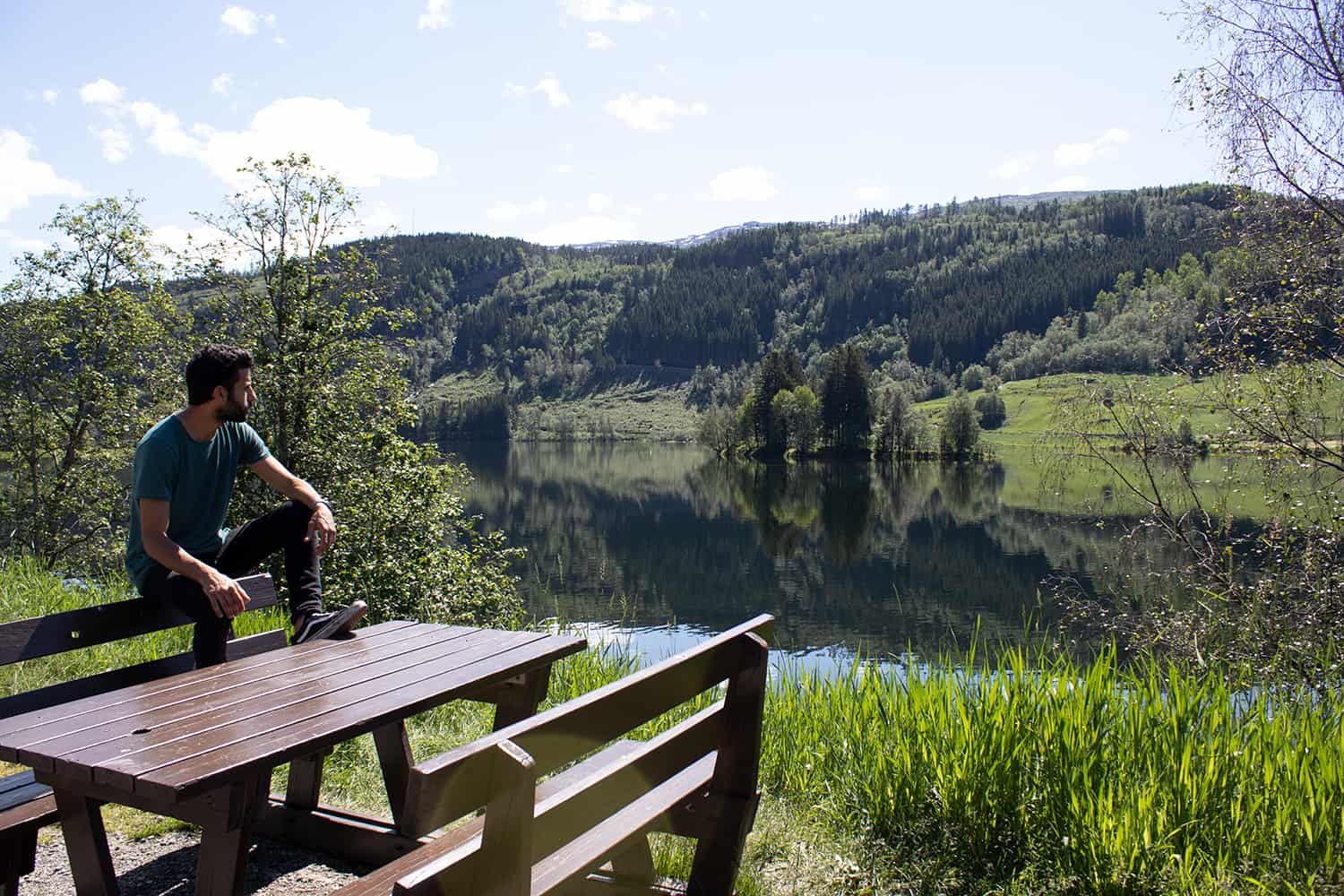
From late June to early August summer peaks with temperatures that can reach 25 ° -30 ° C.
At the same time, there is almost no humidity in the air, and even at night, the temperatures can remain high.
The further north you go in the summer, beyond the Arctic Circle, the more you can see nights with the midnight sun.
On the evening of June 23, the Norwegians celebrate everywhere.
They gather by the sea, light fires into the night, eat, drink and rejoice.
The water temperatures in the sea can reach 18 ° C and even higher, which makes swimming a popular pastime, but you should check the water before you jump in – it can definitely be colder than expected.
In conclusion, while winter is completely cold and frozen, in summer the possible temperature range is very wide and it can vary drastically.
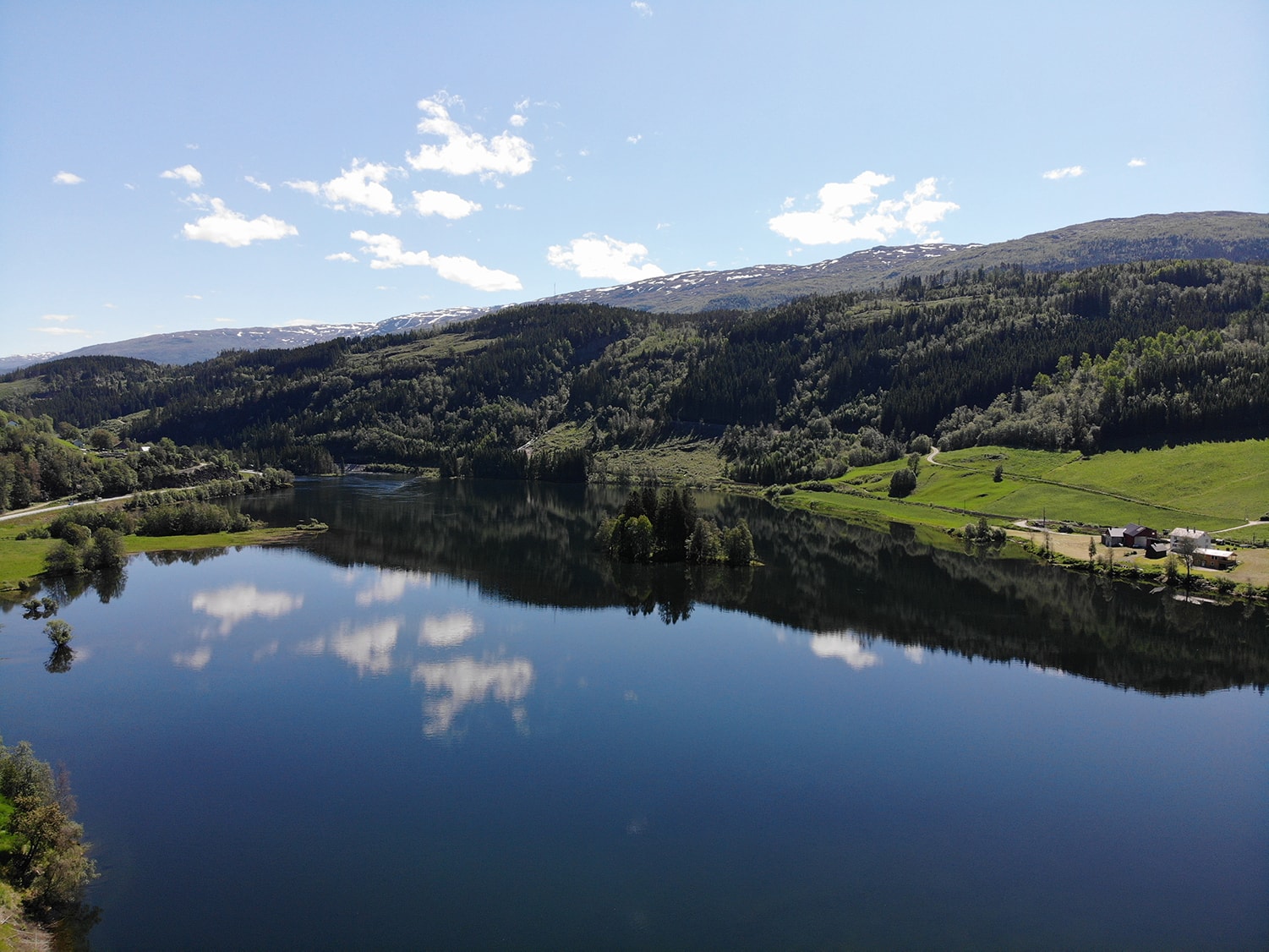
Norway In Summer
On a long trip in Norway, you will experience cold and rain (and even snow!) And a few days later a temperature of 30 degrees.
It should be remembered that even when it is hot in Norway – at night it is always pleasant or cool.
If you are traveling Norway for more than a week, it is almost impossible to avoid rain, the rain will probably reach you at least once on the trip.
The Norwegian Meteorological Service website is excellent and regularly updated, it is a must-have item for travelers in Norway.
TRAVELLING NORWAY IN A CAMPERVAN
Similar to a camping trip in Norway, a trip with a camper van in Norway also has no limit to which direction you start the route, and all the recommendations regarding camping, apart from the equipment, certainly apply here as well.
Of course, the costs for renting a van in Norway are much higher than in many other places in the world.
There are those who rent the van in neighboring countries where the cost is lower but pay on a longer arrival time.
It is worth noting that in Norway many roads are quite narrow, these narrow roads make it difficult for large vehicles to run like caravans and the speed of these vehicles is quite slow.
All sites marked in Norway with a camping sign catch up on the caravans.
Of course, it is advisable to check and know what services are provided everywhere.
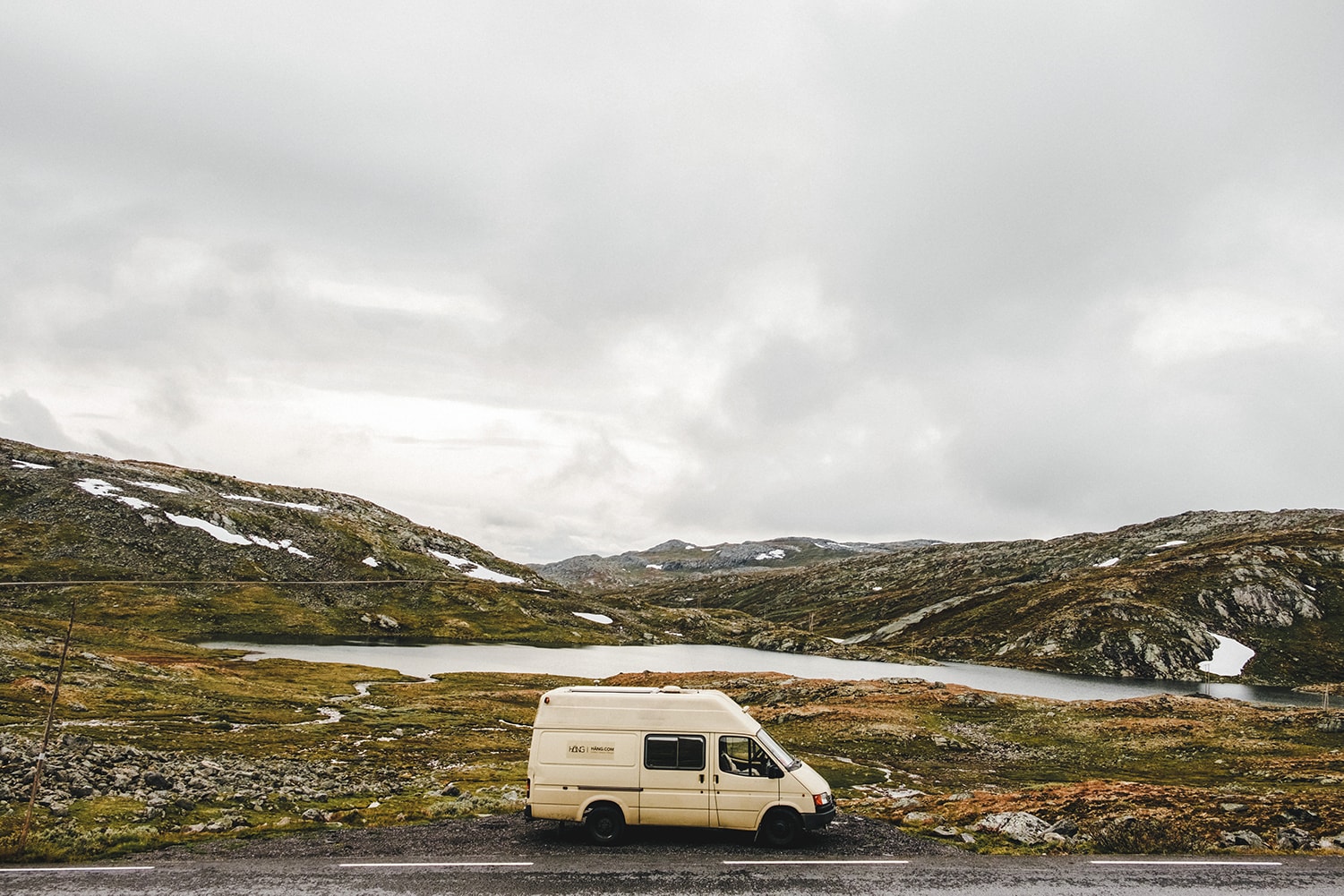
STAYING IN A YOUTH HOSTEL IN NORWAY
Many travelers like young people, adults, and families use youth hostels as a popular way to stay when traveling around Norway at an attractive price.
There are attractive places in Norway where the costs of youth hostels and cheap hotels offer similar prices.
Here, too, the accommodation options are varied and the prices vary.
The rooms are definitely of a good and pleasant standard.
There are several accommodation options in youth hostels in Norway:
Accommodation in shared rooms for only a few people with or without sleeping bags
Accommodation in dorms rooms of 3-6 people with shared toilets.
Accommodation in a double room with a private bathroom – the cost of such a double room is the most expensive option.
The rooms are pre-hijacked and in April and even in March there are hostels that are fully booked, mainly those that are in popular places in Norway.
You should make a membership card for the youth hostels that give discounts.
The excellent distribution of youth hostels in Norway gives you the possibility to end the nights and stay in Norway at a relatively reasonable price.
STAYING IN A CABIN IN NORWAY
One of the most popular ways to travel in Norway is to stay in holiday cottages.
These cabins are located almost everywhere and almost every campsite has a number of holiday cabins.
There are cabins that include toilets and showers whose cost is probably more expensive.
At the peak of the summer season, the holiday cabins need to be booked in advance because the vast majority are booked in advance.
The combination of camping within cabins is the ideal combination to travel in Norway both in terms of costs and location.
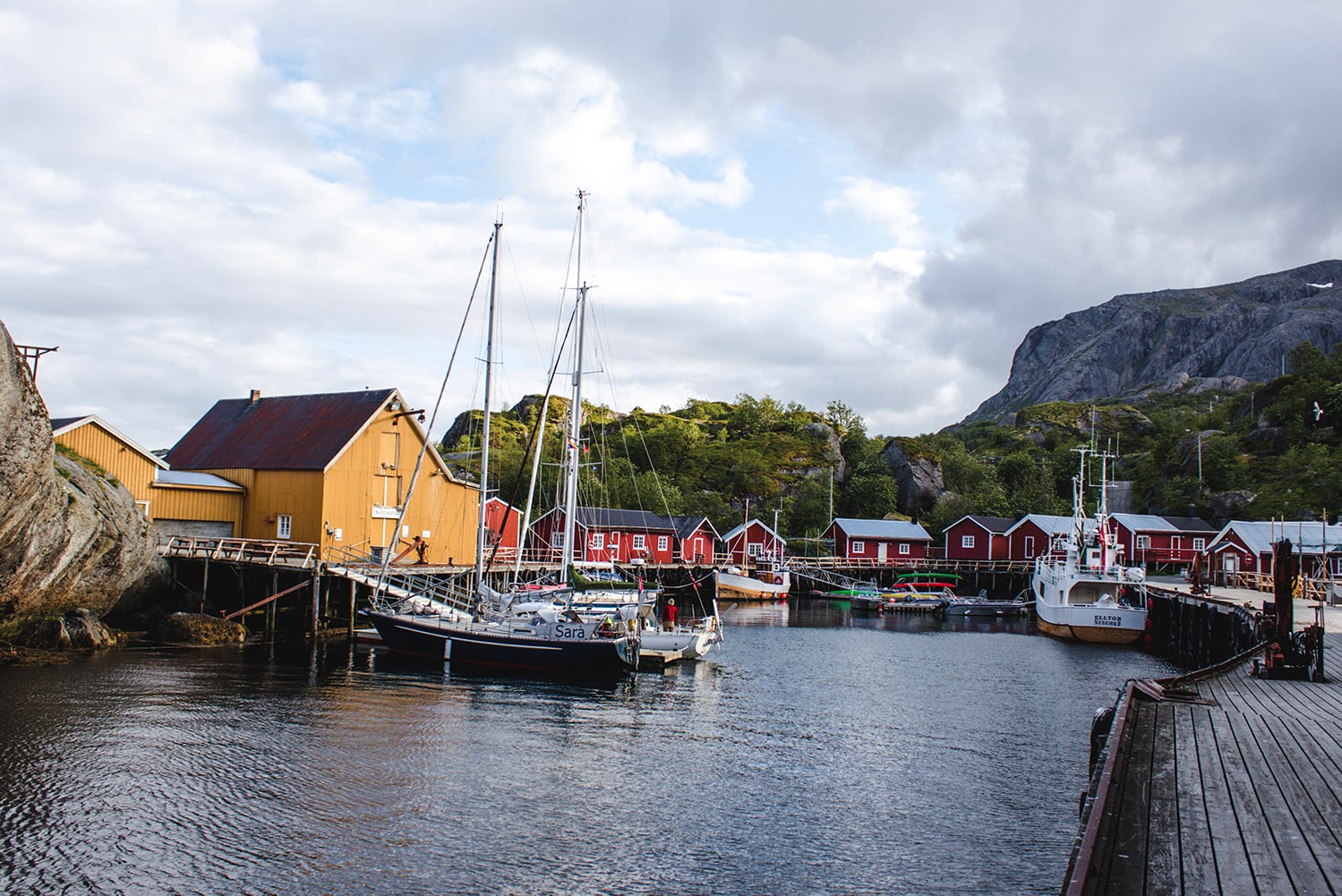
HOTELS IN NORWAY
The price of hotels in Norway is really not one of the cheapest in Europe.
Staying in hotels makes the trip to Norway cumbersome in a long trip because you have to be there on a set date.
If you are sleeping in a hotel in Norway you can check and compare prices through booking and find the most affordable hotel.
The advantage of booking from a booking.com is the cancellation option, it is usually possible to cancel the accommodation up to a day before arrival which allows extensive freedom of action.
As a rule, you will always choose hotels that give you the option of self-cancellation as close as possible to the date of arrival at the hotel.
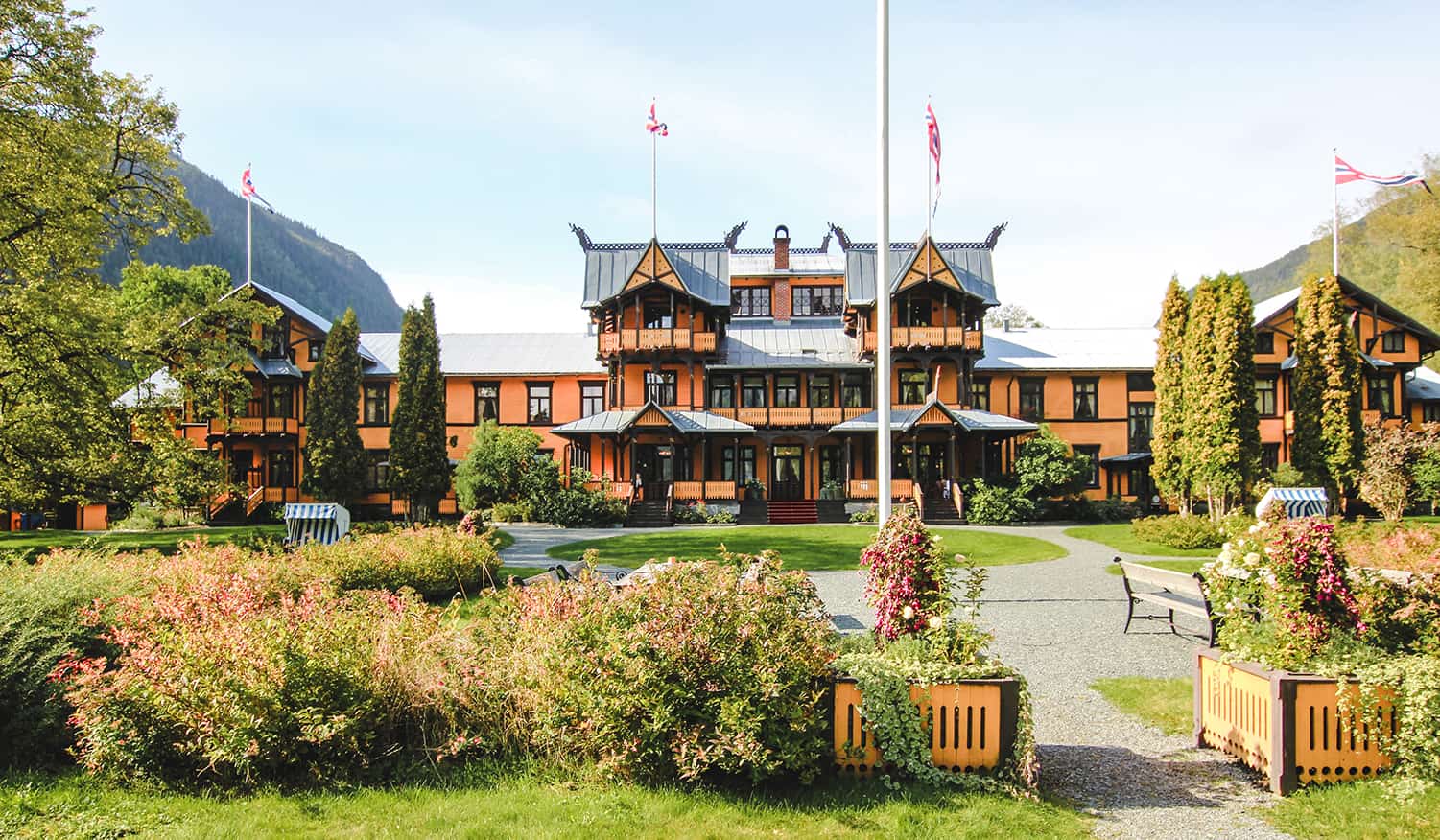
Dalen Hotel, Telemark
DRIVING IN NORWAY: SPEED LIMIT, TUNNELS, FERRIES & TOLL ROADS
EVERYTHING YOU NEED TO KNOW BEFORE YOUR NORWAY ROAD TRIP
In general, driving in Norway is quite comfortable and straightforward.
Most roads in Norway are in good to great condition – even roads that have steep ascents or descents – driving them is easy, as long as you drive slowly and carefully.
If you are afraid of leading in Norway – then do not (emphasizes that the reference is to summer only).
Some points about roads and driving in Norway that are worth considering:
A large part of the roads in Norway, especially when driving away from the cities are single-lane roads or two-way roads with limited visibility of vehicles coming from the other side.
Sometimes you will find yourself stuck for long minutes after a slow vehicle with no possibility of overtaking or even find yourself as part of a convoy, accept it with understanding and patience, do not try to make dangerous detours.
Many roads in Norway are very narrow – and still full of trucks or the most common hit vehicle in Norway – camper vans.
You will encounter many situations where you will have to stop or slow down to let the vehicle on the other side pass. The keyword is patience.

SPEED LIMIT
The maximum driving speed in Norway is 110 kph, but on most roads in tourist areas, the speed limit is 60-80 kph.
Speed cameras are mostly scattered on multi-lane roads near large cities (but not only).
Not sure how many are real and how many are fake cameras.
Many people go over the speed limit and I have not seen a single police car on the whole trip, not even in Oslo.
Drive with discretion.
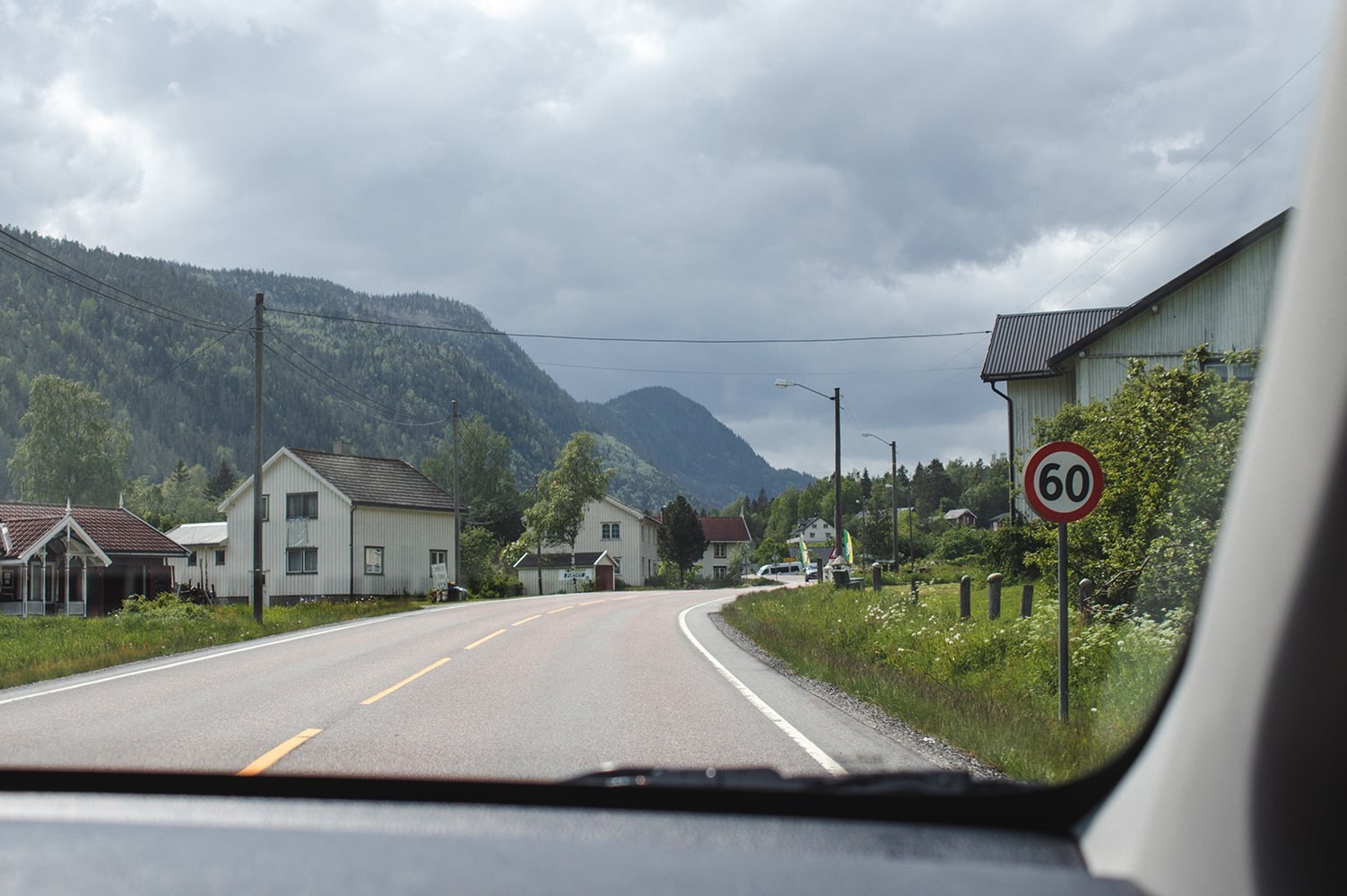
FERRIES IN NORWAY
A trip to Norway will also include quite a few crossings with the vehicle on ferries.
It’s a simple, fast and efficient process – almost imperceptible.
Get on the ferry and check out on the other side, sometimes you will not even have time to get off the toilet and you will continue on the way.
HOW TO PAY FOR FERRIES IN NORWAY?
You don’t need to book a ferry in advance!
*Pay everything on the ferry.
There is no need to even check the times of the ferries that are on major roads – as they operate throughout the day and frequently.
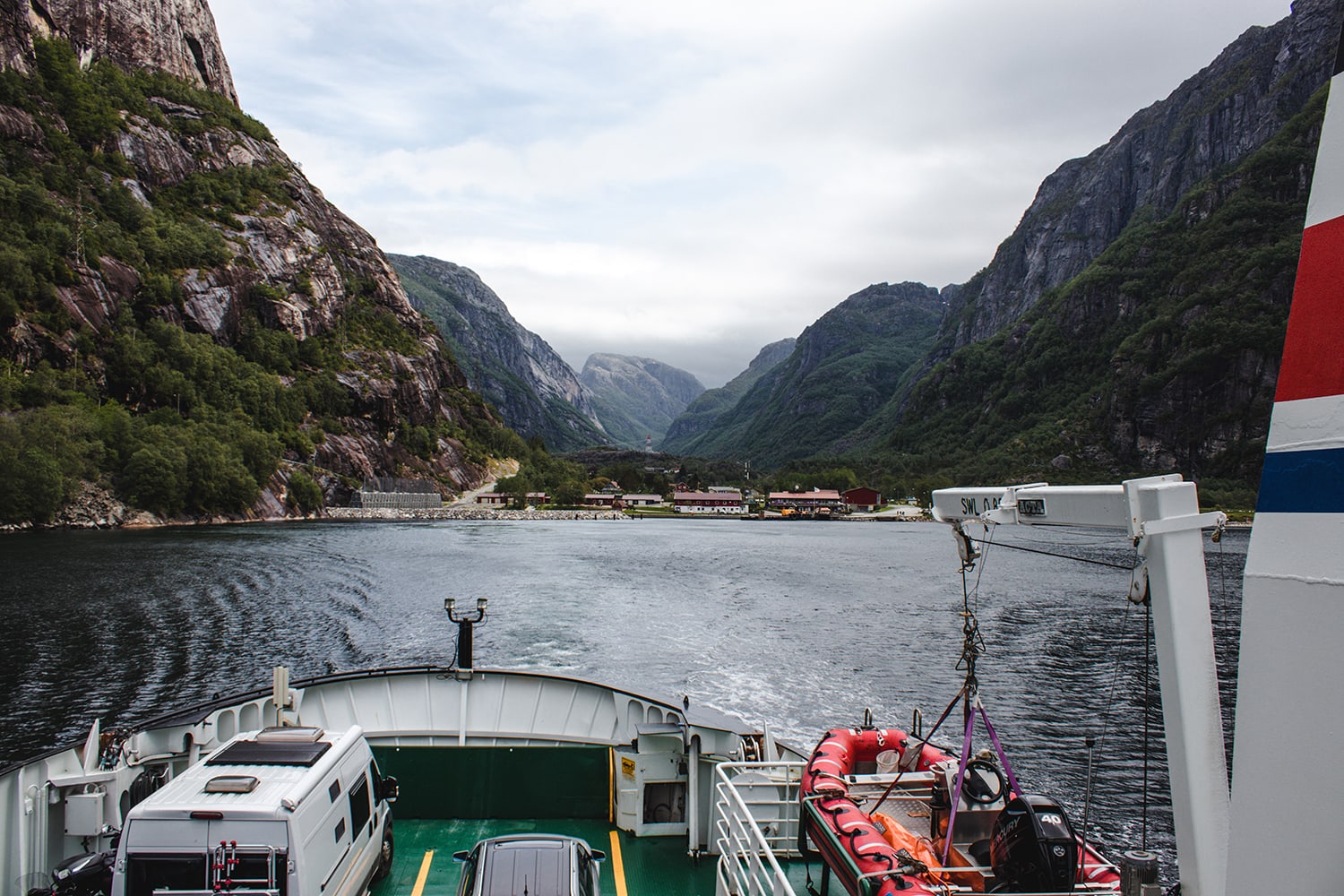
Did a ferry escape you? It’s ok, get on the waiting lane, wait 15-30 minutes (in the meantime drink coffee) – and you will already be on the next ferry.
The information refers to transit ferries and not tourist cruises!
* Apart from the ferries in Geiranger Fjord – which should be booked at least a day in advance, these ferries are busier and their activity ends relatively early (the last ferry departs from Geiranger to Hellesylt at 18:30). The ferries in this fjord are considered a tourist cruise and not a means of transportation (although in practice they are also used for this), so they function accordingly.
The ferries on Flåm are also tourist cruise ships and not a means of transportation – so they also require advance booking.
The prices of the ferry vary, but in most places, it is a small amount of money relative to the total trip costs.
The price is calculated according to the size of the vehicle – the larger your vehicle, the more you will pay.
The price of the driver is included in the price of the vehicle transfer and each additional passenger has to pay.
Here too, the ferries in Geiranger are exceptional and are considered a tourist cruise – therefore they are much more expensive.
TOLL ROADS IN NORWAY
The toll roads in Norway are many – they can not be avoided completely, it is unrealistic for the time-limited tourist.
In some specific cases, a toll road replacement can be found, most often it is not worth the effort.
You can calculate the cost of travel on the troll roads according to the point of departure and the point of end.
Note: For drivers of a rented car – the travel fees are calculated automatically and will be sent to you by email from the rental company.
Check with the rental company before setting off.
TUNNELS IN NORWAY
One of the most prominent features of the road network in Norway is the tunnels.
A road trip in Norway includes passing through dozens and even hundreds Of tunnels – some of them are particularly long, but most of them are well maintained and well lit.
You will find unimaginable amounts of tunnels hewn in the mountains.
The tunnels in central Norway are modern, comfortable, well-controlled, well lit.
The tunnels have great radio reception.
The tunnels are maintained through cellular reception and an Internet network.
In some of the large intercity tunnels, you will find particularly surprising and impressive, even squares that divide the tunnel and split it into sub-lanes in different directions.
The famous car tunnel, the longest inland in the world, the newest in the world, and the most stunning of them all, is of course the Lærdal Tunnel. Located on an important road in Norway, the E-16, between Bergen and Oslo.
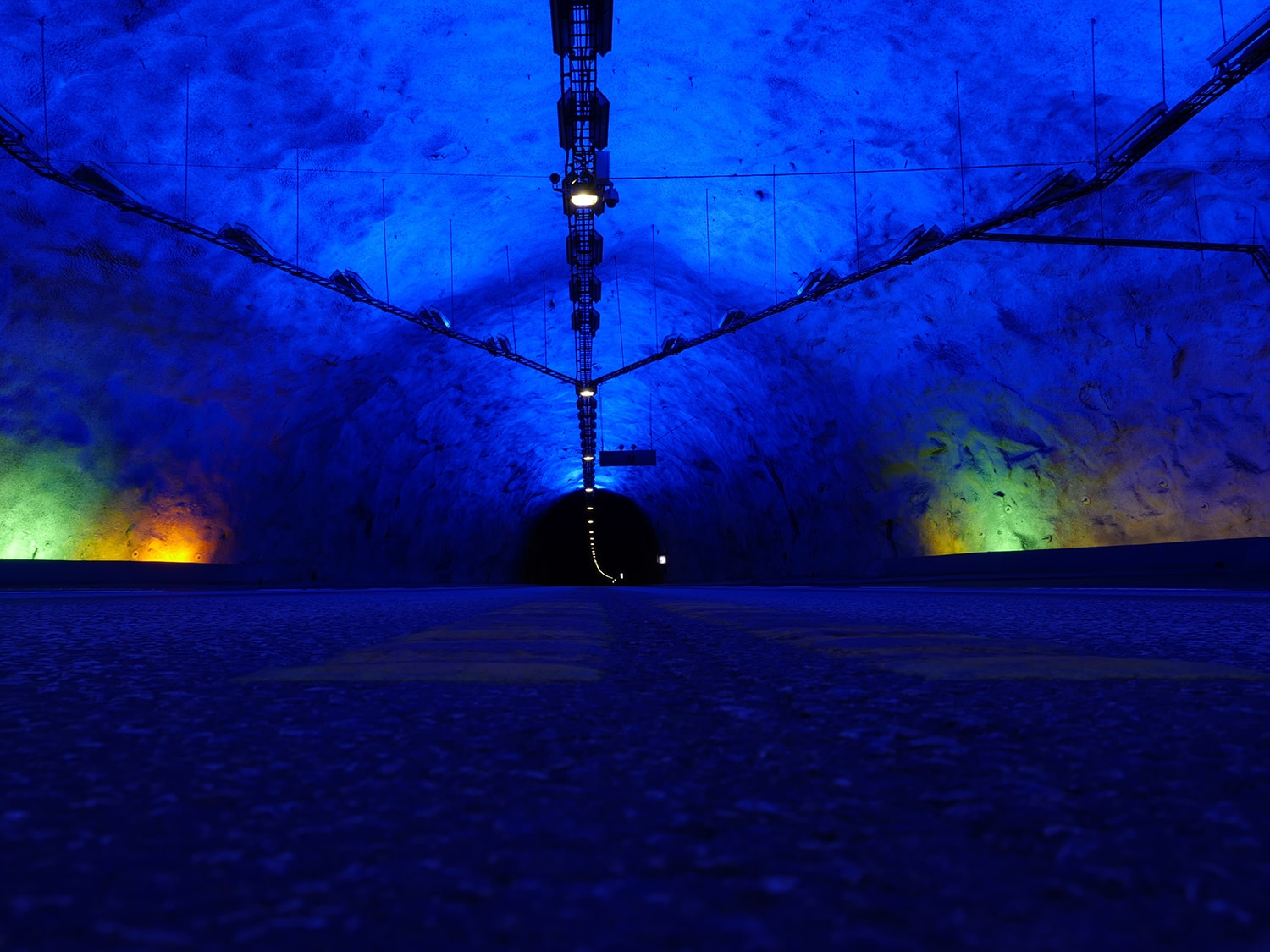
Lærdal Tunnel – Longest Tunnel In Norway
The tunnel is 24.5 kilometers long and connects Lærdal to Aurland.
The Lærdal Tunnel is located 120 kilometers (as the crow flies) northeast of the city of Bergen.
Along with the tunnel strict speed controls.
Claiming that Norwegians are not used to driving on straight roads, and the road may confuse them for driving too fast.
The tunnel is well controlled. After each kilometer, there is a sign that makes it clear to the driver how many kilometers he has traveled in the tunnel, and how many kilometers he has left before him.
The most exciting in the Norwegian Lærdal Tunnel is the surprising lighting, in the extensions along with it.
In the long darkness, you will suddenly discover an extension of a rounded space, resembling an ice igloo, lit by a variety of blue and yellow lighting.
Here you can stop, refresh, take pictures. Even trucks can stop here for rest and refreshment.
The blue-yellow lighting gives a fresh feeling of daylight, prevents apathy and drowsiness from the drivers.
The lighting also reduces feelings of claustrophobia, which can form in this long and almost endless tunnel.
In the tunnel some traffic light barriers, seven blockages deep in the tunnel, due to an accident or other malfunction, allow drivers to retrace their steps and exit the tunnel without getting stuck in it.
The level of communication and control of the tunnel is increased, it has cameras, and as in many Norwegian tunnels, it has an SOS communication system every 250 meters.
A state-of-the-art control system also counts the cars coming in and out of the tunnel. Permanent air conditioning, a dust filtration system, and the world’s first electronic filtration to remove carbon and gas emissions from vehicles.
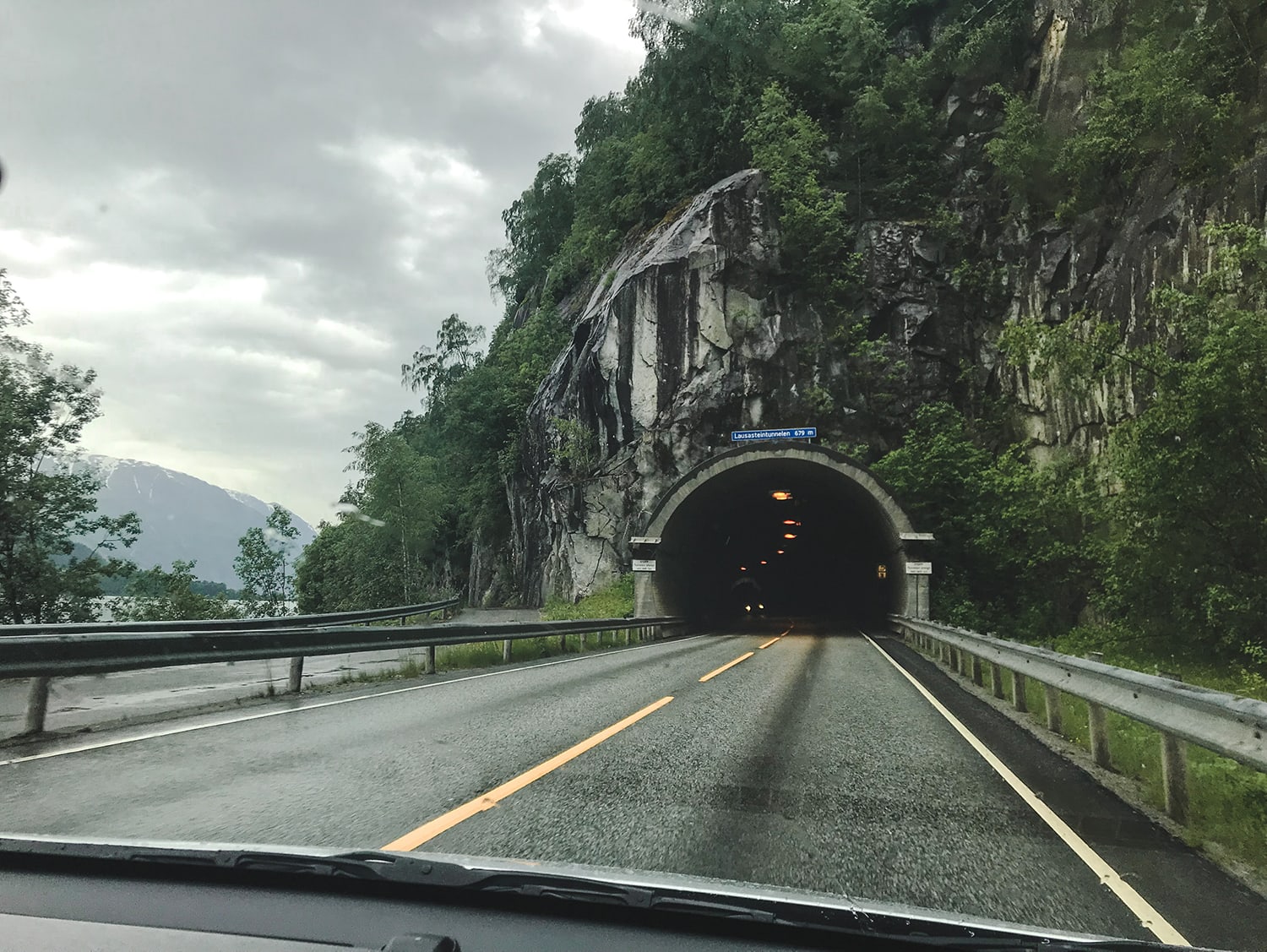 [……]
[……]
